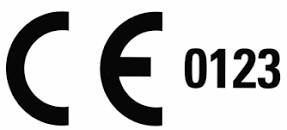Implantable Cardioverter Defibrillator (ICD) Devices
Aurora EV-ICD™ System
Extravascular implantable cardioverter defibrillator* (EV-ICD) for people who have had a heart attack, experienced heart failure, or have been diagnosed with a fast heartbeat (tachycardia) and are at risk of sudden cardiac arrest.
* an ICD with the lead outside of the heart and veins.

What is an ICD?
Tachycardia, also known as a fast heartbeat, is a condition that may call for a heart device called an implantable cardioverter defibrillator (ICD) to be implanted. A discussion with your doctor can help determine if this is the right option for you.
An ICD system is comprised of the defibrillator and lead(s).
- A defibrillator monitors the heart and automatically delivers therapies to correct dangerously fast heart rhythms as they develop.
- Leads are soft, thin, insulated wires that are roughly the diameter of a spaghetti noodle. The leads carry the electrical impulse from the defibrillator, or ICD, to your heart and relay information about the heart’s natural activity back to the ICD.

After the ICD system is implanted, an external computer called a programmer, located at your doctor's office or clinic, can be used to program the heart device and retrieve information that will assist your doctor n treating your heart condition.
Your doctor will schedule periodic monitoring checks, which may be done remotely if your physician deems appropriate.
The Aurora EV-ICD system
The Aurora EV-ICD system is made up of two parts:
- The EV-ICD lead
- The EV-ICD device
Unlike most defibrillators that are implanted in your upper left chest with the lead(s) running through the veins into your heart, the Aurora EV-ICD system is positioned differently.
It is called an "extravascular" system because the lead is placed below the breastbone and is outside of the heart and veins. The defibrillator is placed below the left armpit.

How does it work?
The Aurora EV-ICD is designed to monitor your heartbeat 24 hours a day. Your ICD can detect irregular rhythms and automatically deliver the appropriate therapy when it is needed.
If your heart is beating too fast or irregularly, the device can send small electrical signals to correct your heart rate (this is called antitachycardia pacing, or ATP).
If the fast heart rate (tachycardia) continues, the ICD will deliver an electric shock to restore your heart to a normal rate. This is called "defibrillation". A shock can feel like a sharp or quick thump to the chest, but people feel the shock differently.
The Aurora EV-ICD can also treat slow heart rhythms by sending a short series of electrical pulses to help the heart resume a normal rhythm.
Your doctor will program the ICD to deliver the most effective therapies for your specific heart condition.
After recovering from the implant procedure, most people are able to resume their normal, daily activities. Work with your doctor to develop a plan, discuss when you can return to your normal activities, and which ones you should avoid.
Watch a patient story
I was afraid that I wouldn’t be able to get back to my normal life. After getting the EV-ICD, I’ve been able to return to the activities that I love.
– Harrison, Medtronic EV-ICD patient
Not every person will receive the same results. Talk to your doctor about your treatment options.
Advantages
With its small size, rounded edges, and placement under the arm, the Aurora EV-ICD system may be less visible and more comfortable than other extravascular ICDs that are currently available.
It is the only extravascular ICD to offer ATP (sending small electrical signals to correct your heartbeat before delivering a shock). It is projected to last more than 10 years.*
*Estimates are based on accelerated battery discharge data and device modeling. Results for individual patients vary based on programmed parameters and features.
See also
Patient Video: What is an ICD - (02:52)
Patient Video: What is Aurora EV-ICD - (02:54)
Testimonial: EV-ICD Cheryl patient video - (04:00)
Heart Device Answers
Visit the website below for any question you may have about living with your heart device.
Contact Us
BeConnected
Heart device patient support
You can rely on us as your experienced partner if you have a question about your heart device or patient monitoring solutions.
00800-266-632-82*
From mobile or abroad**
UK: +44 1923 202 543
IE: +353 143 930 683
Monday – Friday 08:00 – 16:00***
* Free-of-charge number from a landline and some mobiles (please check with mobile service providers)
** Number charged at standard call rate (may vary between phone providers)
*** Voicemail service available outside opening hours
Information on this site should not be used as a substitute for talking with your doctor. Always talk with your doctor about diagnosis and treatment information.

